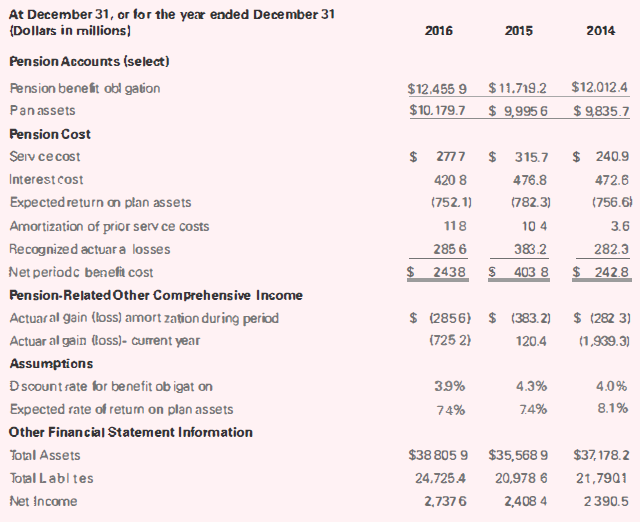Eli Lilly and Company. a global pharmaceutical company. offers defined-benefit plans to its employees. The following table
Question:
Eli Lilly and Company. a global pharmaceutical company. offers defined-benefit plans to its employees. The following table presents select data about Eli Lilly 's defined-benefits pension plan. Eli Lilly reports under U.S. GAAP, Use this information to answer the questions that follow regarding Eli Lilly's defined-benefits pension plan, including its pension costs and liability.

a. What is Eli Lilly's pension cost in 2016, 2015, and 2014? What are the components of its pension cost? What are pension costs after taxes as a percentage of net income? Comment on any changes in pension costs after taxes as a percentage of net income. Consider the growth in net income compared to the growth in pension costs after taxes. Assume a 35% tax rate.
b. What is the funded status of Eli Lilly's defined-benefit pension plans in 2016, 2015, and 2014? How has the funded status changed over time? What is the percent of the net pension liability to total liabilities in 2016, 2015, and 2014?
c. How have the settlement rate and expected return on plan assets changed from 2015 to 2016? How does the change in the settlement rate affect the pension obligation and pension cost? How does the change in the expected return not plan assets affect the pension cost?
d. If Eli Lilly had reported all actuarial gains and losses in net income rather than other comprehensive income. what would its pension cost have been in 2016, 2015. and 2014? Comment on the changes in its pension cost.
e. From Example 19.29 in the text, compare pensions at Eli Lilly to those at Johnson & Johnson. Specifically, compare the pension costs after taxes as a percentage of net income and the net pension obligation as a percentage of liabilities.
Step by Step Answer:

Intermediate Accounting
ISBN: 978-0134730370
2nd edition
Authors: Elizabeth A. Gordon, Jana S. Raedy, Alexander J. Sannella





